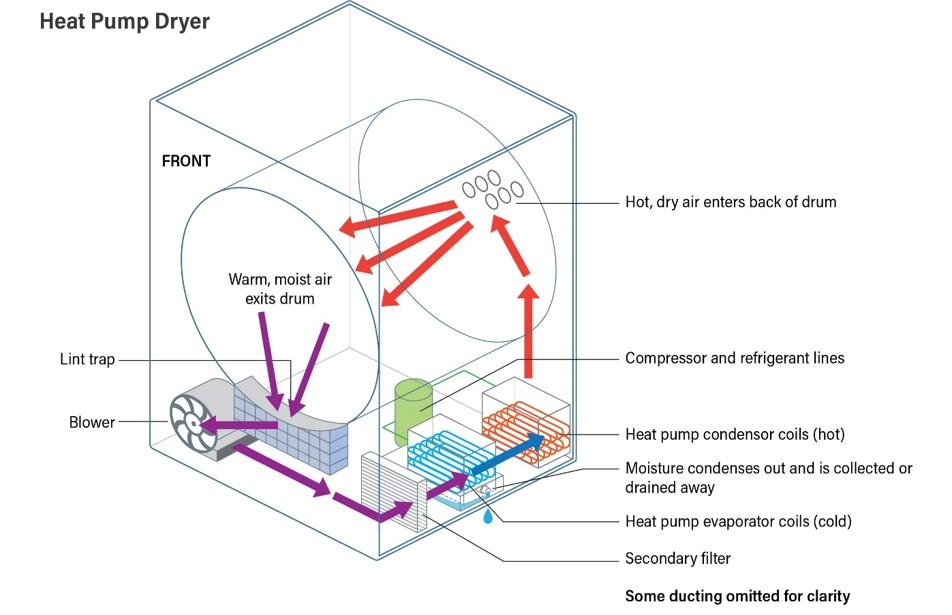Update: October 2021
CEE recently conducted a final report on the in-home and lab testing of heat pump clothes dryers. For in-home testing, the study monitored consumers’ existing dryers for a few months and then installed heat pump clothes dryers to compare performance. Consumers saved a significant amount of energy with the new dryers, around 20% on average. Despite consumer perceptions to the contrary, the heat pump clothes dryers’ smaller capacity was sufficient for nearly all home laundry load sizes. In lab testing, energy performance was not dependent on specific dryer settings, which means consumers can select cycles that suit their needs without impacting energy efficiency.
Overview
The fundamentals of clothes dryers have changed very little since they were first introduced in the 1940s. Today, nearly all single-family homes in the upper Midwest have a clothes dryer, and more than 80 percent of these use electric resistance heat to dry clothes. Heat pump clothes dryers hold potential for significant electricity savings by pulling air from the surrounding space to heat clothes, rather than using electric resistance.
The technology is already common in Europe, but is only beginning to be introduced to the North American market. In addition, prices for heat pump dryers are now becoming competitive with conventional high-end clothes dryers. There is still a need to better understand the direct and indirect energy savings from this technology, as installed in actual Minnesota homes.
This study will conduct a field study of heat pump clothes dryers, compared to new conventional electric clothes dryers in single-family homes. This will involve both energy monitoring and research to better understand the consumer experience with the newer technology. The team will also explore the possible role of incorporating ventless heat pump clothes dryers in multifamily new construction.
Difference between a conventional and heat pump dryer.


Project Summary
Objective
Investigate savings and the potential market for heat pump clothes dryers.
Scope
- Task 1: Recruit a sample of 30 households.
- Task 2: Monitor conventional and heat pump clothes dryer energy consumption.
- Task 3: Conduct consumer research.
- Task 4: Investigate the potential benefits of heat pump clothes dryers in multifamily new construction.
Non-energy benefits
-
Improved impact on clothing appearance due to lower drying temperatures.
-
Elimination of dryer venting.
